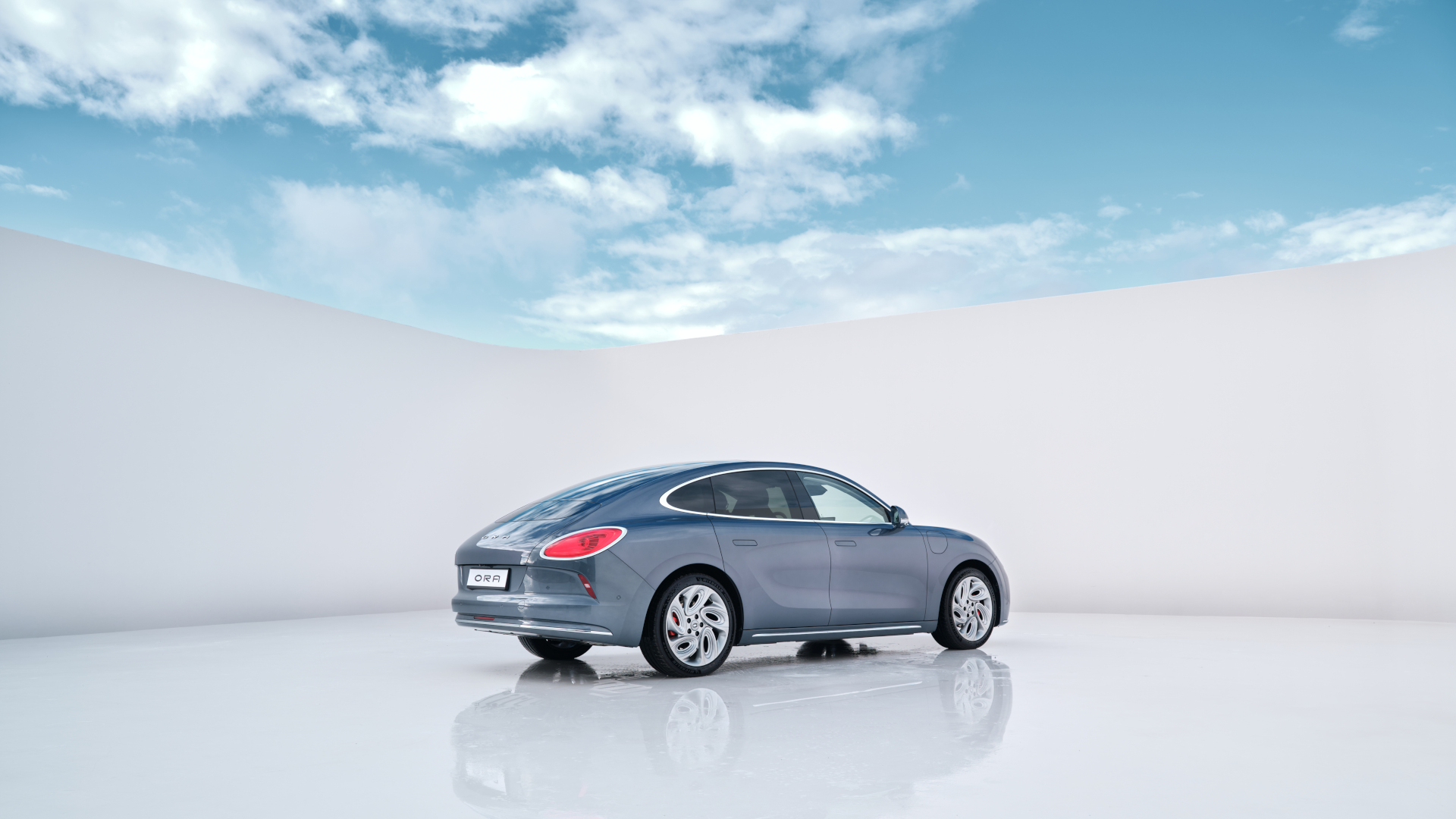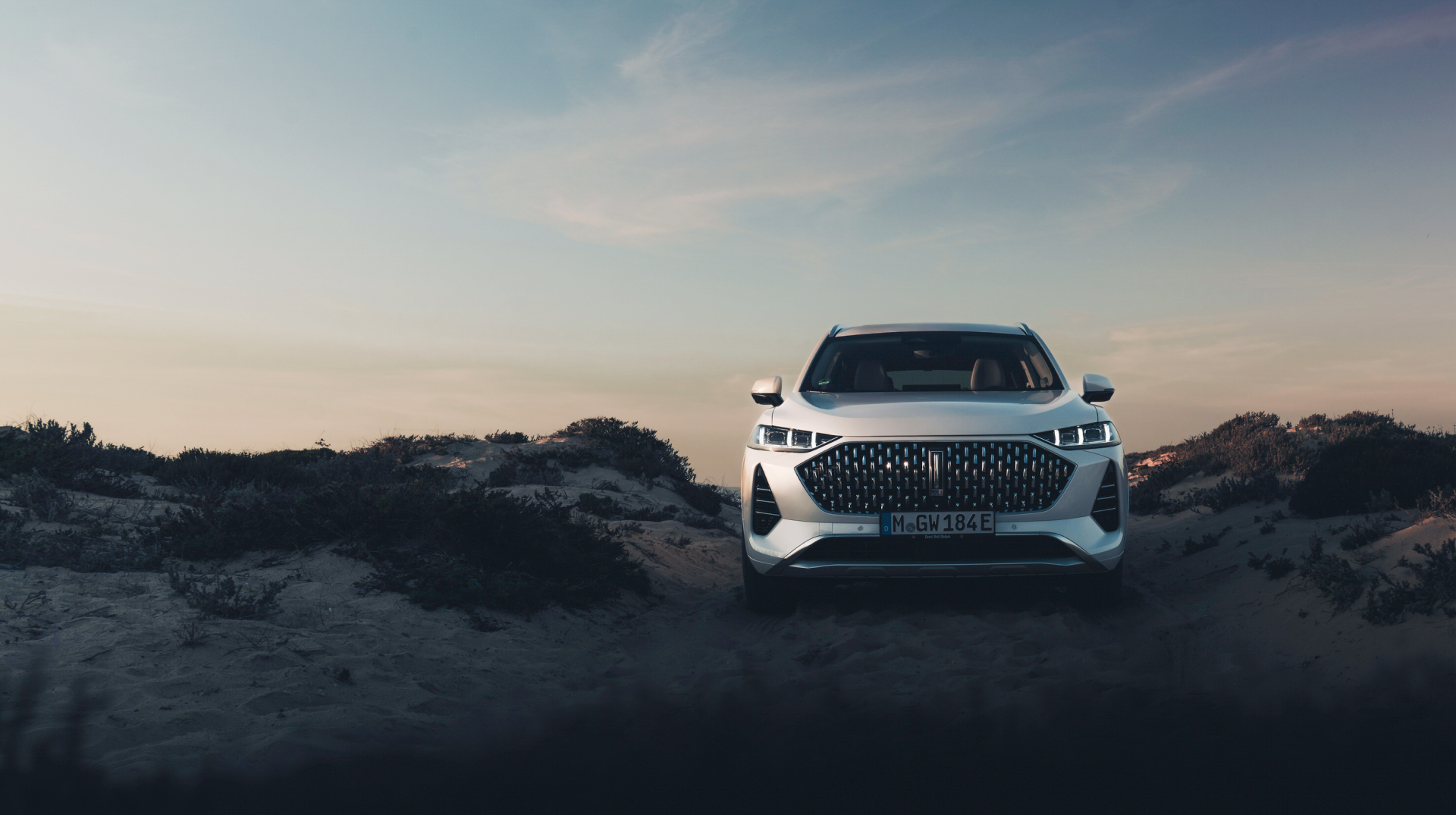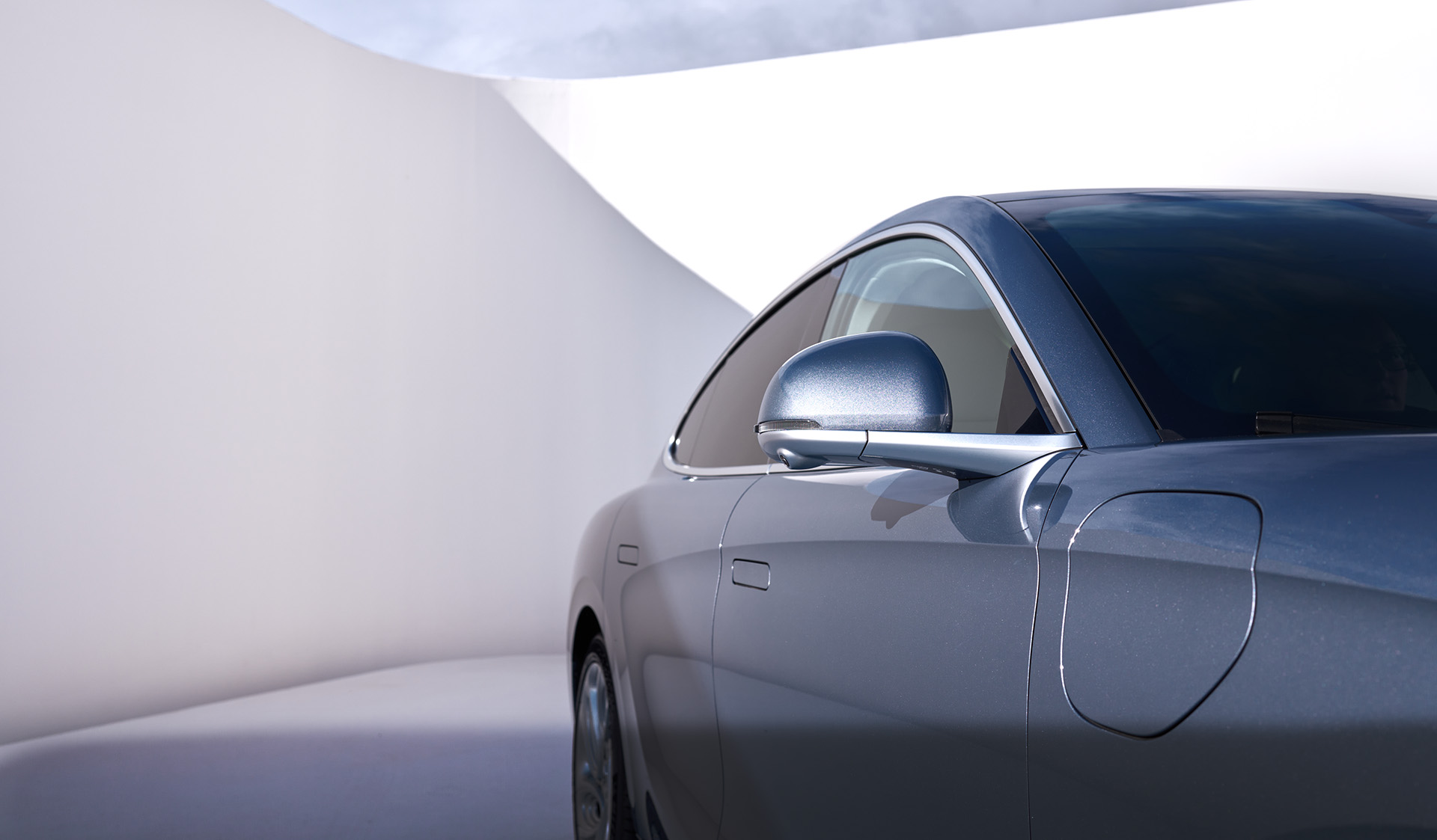Ultra-streamline design aesthetics.
The grand sweeping curves and ample volume embody the sleek, aerodynamic stance of a coupé, showcasing a bold and dynamic expression of streamline design.


Not only impressive but also well-rounded in design.
Our new fully electric saloon is a marvel of style and sophistication. Boasting a sleek exterior, a luxurious interior, and a wealth of high-end features, it's sure to turn heads wherever it goes.
1 The figures shown on this GWM ORA 07 model page are for the model GWM ORA 07 in the new 2024 trim line PRO, with an electricity consumption combined in kWh/100 km (WLTP): 16.
2 GWM ORA 07 vehicles previously presented under the "Next Cat" moniker are now being marketed and sold as "GWM Ora 07". This is part of GWM's transition to rename its existing and future vehicle lines. Currently and in the future, there will be additional GWM ORA 07 trim lines available, with varying specifications and ratings for (including but not limited to) battery power, range, consumption and emissions. All information subject to change and is up to date as of 22 November 2023.
3 The stated figures have been calculated using the legally required measurement techniques. Previously, consumption figures were measured using the New European Driving Cycle (NEDC). Since 1 September 2017, certain new vehicles have been given type approval in accordance with the Worldwide Harmonised Light Vehicles Test Procedure, WLTP). Compared with NEDC, WLTP represents a more realistic procedure for measuring fuel consumption and CO₂ emissions. As of 1 September 2018, NEDC is gradually being replaced by WLTP. The fuel consumption figures and CO₂ emissions measured using WLTP are, in many cases, higher than those measured using NEDC, which is attributable to the more realistic test conditions associated with WLTP.
Aerodynamics, weight and rolling resistance may change due to optional extras and accessories and have the ability – just like personal driving style and weather/traffic conditions – to influence the fuel consumption, electricity consumption, CO₂ emissions and on-road performance of a vehicle.
For more information on the official fuel consumption and official specific CO₂ emissions of new passenger cars, please refer to the Guide on the Fuel Economy, CO₂ Emissions and Power Consumption of New Passenger Car Models, which is available free of charge at all outlets, from DAT Deutsche Automobil Treuhand GmbH, Hellmuth-Hirth-Str. 1, 73760 Ostfildern, Germany, or at www.dat.de.
6 Selected exterieur colours are fee-based optional equipment. Picture shows optional equipment.





